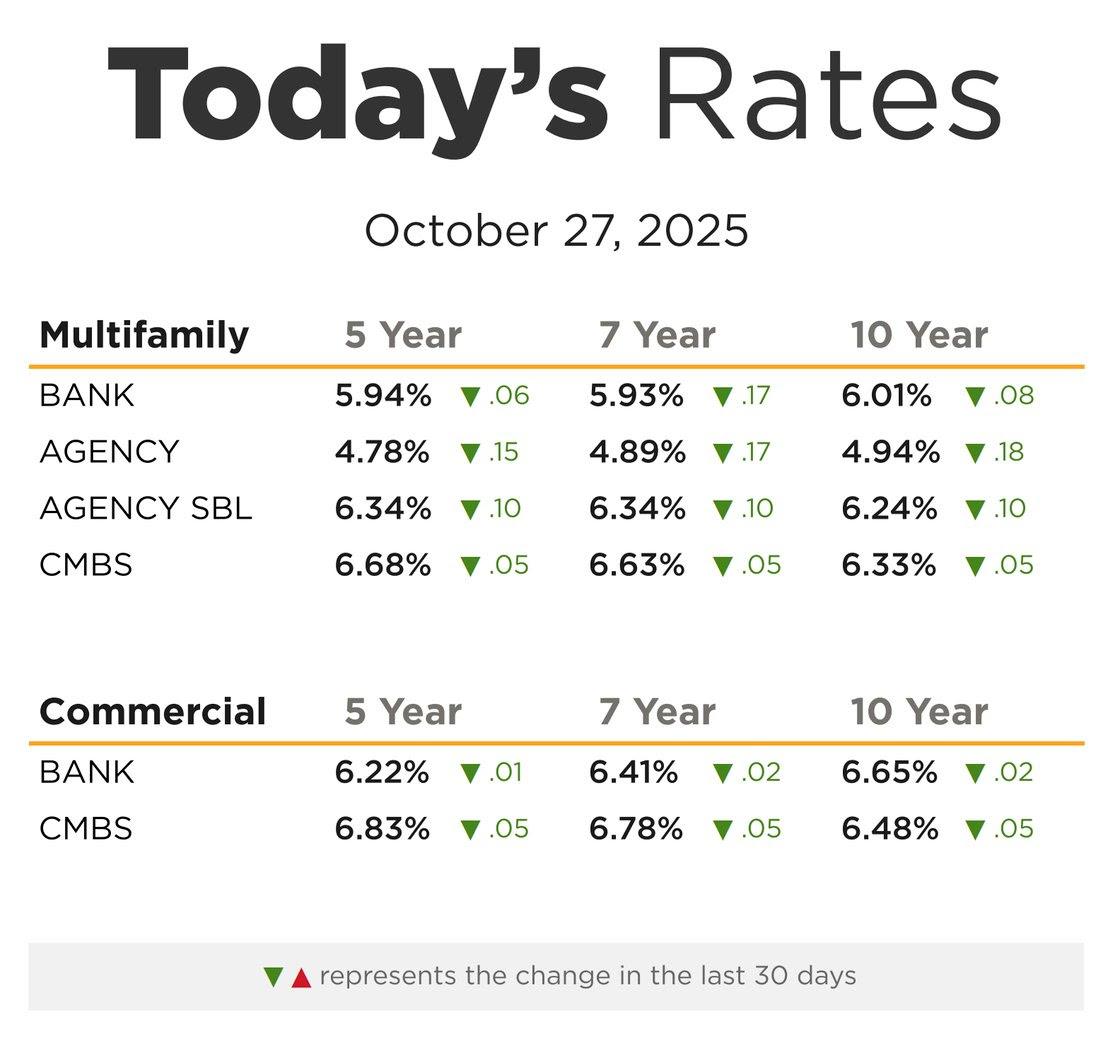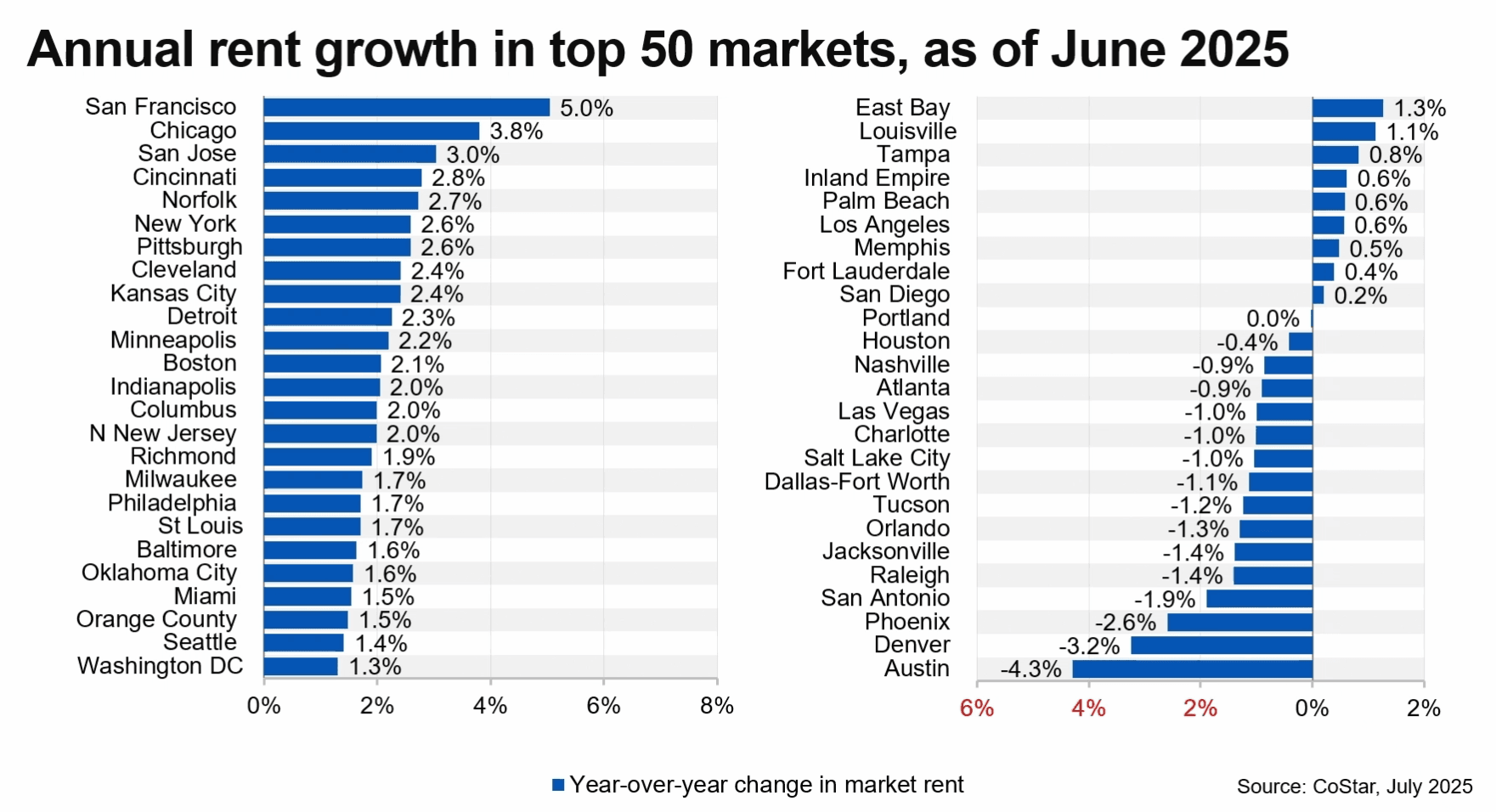Although multifamily operators face challenges, including rising costs and high interest rates, demand is keeping absorption consistent in most markets.
Dive Brief:
- Following several months of declines, the national average rent rose for the second month in a row in April, up $6 to $1,725, according to Yardi Matrix’s latest Multifamily National Report. Year-over-year rent growth remained unchanged at 0.7%
- Overall, rents are up $12 this year to date and only off by $2 from the all-time high of $1,727 set last summer.
- While expenses and insurance costs are on the rise and interest rates remain elevated, demand is still consistent, enabling healthy absorption in most markets, according to Yardi. This stems from high household formation rates, a strong job market, immigration and domestic migration to the South and West regions of the country.
Dive Insight:
The single-family build-to-rent sector also had a strong month in April, with the average rent rising $9 to an all-time high of $2,154. YOY rent growth rose 10 basis points to 1.3% for build-to-rent properties, and occupancy remained at 95.4%. Boston had the highest year-over-year single-family rental growth by far, at well over 20%.
The average lease renewal rate was 65.8% in March, the lowest rate recorded in the past two years. (Renewal rate information is current to the previous month.) Renewal rents rose 4.4% YOY in March, up 80 basis points from February.
| Market | YOY rent growth, April 2024 | YOY rent growth, March 2024 | Difference |
|---|---|---|---|
| New York City | 4.6% | 5.0% | -0.4 |
| Columbus, Ohio | 3.8% | 4.5% | -0.7 |
| New Jersey | 3.5% | 3.4% | 0.1 |
| Kansas City, Missouri | 2.9% | 3.7% | -0.8 |
| Chicago | 2.9% | 3.1% | -0.2 |
| Washington, D.C. | 2.8% | 2.8% | 0 |
| Boston | 2.6% | 2.6% | 0 |
| Philadelphia | 2.5% | 2.2% | 0.3 |
| Indianapolis | 2.3% | 3.5% | -1.2 |
| Detroit | 2.0% | 1.5% | 0.5 |
SOURCE: Yardi Matrix
The ongoing demand for new apartments is not limited by region or market size, according to Yardi. New York City and San Francisco, two gateway metros hit hard by outmigration, have recorded positive new unit absorption over the last two years and maintained consistent occupancy YOY through March. New York City is also the market with the strongest rent growth this month, at 4.6% year over year.
Meanwhile, occupancy has slipped slightly in Midwest and Sun Belt markets, owing to an abundance of new units coming online. However, as demand for these units is still high, negative rent growth is abating in some of these markets. The only two in Yardi’s top 30 with YOY rent growth under -3% are Austin (-6.5%) and Atlanta (-3.4%)
“Though apartment demand has cooled after 2021’s record 620,000 units, it remains consistent,” the report said. “That’s good news with supply growth at multi-decade highs. Over the next year or two, it may take longer to lease up new properties in high-supply Sun Belt markets, and owners may have to offer concessions to attract and retain tenants, but if demand remains healthy, fundamentals will return to normal after new stock is digested.”
Source: Rents are on the rise again, moving close to all-time highs
Receive Market Insights
Periodic analysis on rents, pricing, cap rates, and transaction activity across Chicago and key suburban markets.



